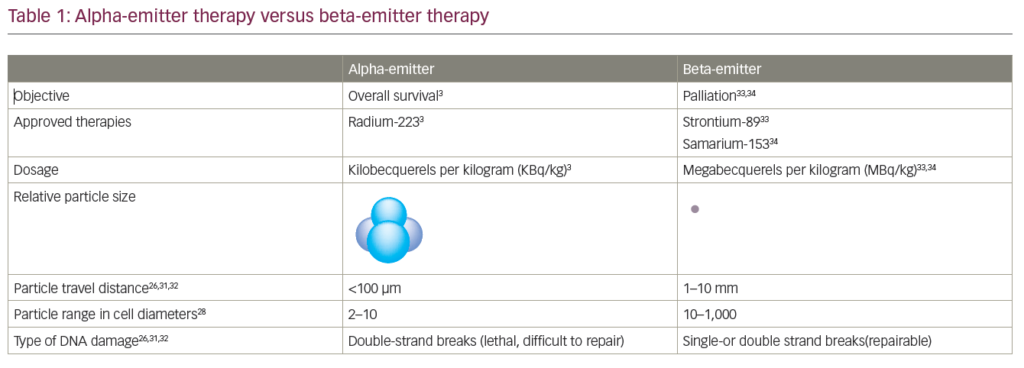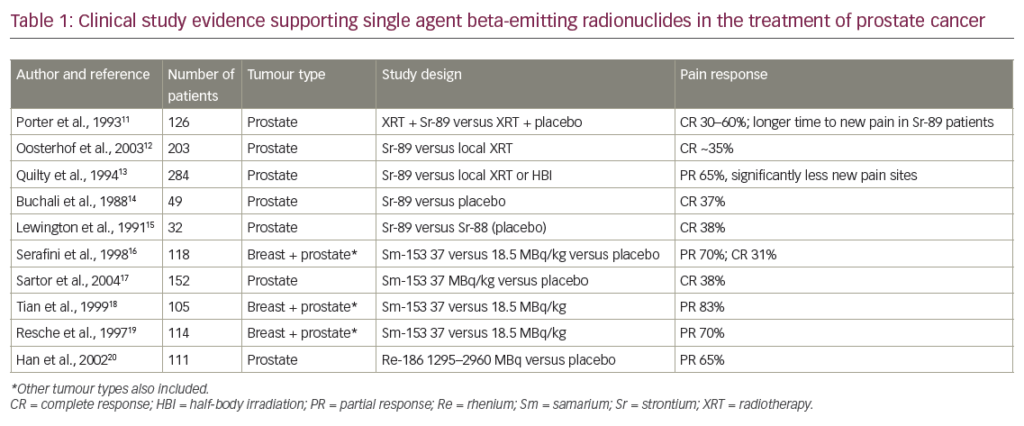From Antigen to Tumour Marker
In the 1960s, antigens were characterised in prostate tissue extracts with properties of prostate organ specificity.1 Independently, between 1966 and 1971, the Japanese team of Hara et al. identified a prostatespecific protein in seminal fluid – gamma seminoprotein.2 An assay for gamma seminoprotein was developed for forensic use in rape cases. In 1978, Sensabaugh purified a prostate-specific protein from seminal fluid (p30), which was also used for forensic purposes.3 Following the discovery of prostate antigen in prostate cancer tissue and sera by Wang et al. at Roswell Park Memorial Institute in 1979, the question of whether gamma seminoprotein, p30 and a protein with similar properties, E1 antigen, represented the same protein as prostate antigen was the focus of numerous studies. In 1992 it was determined that all of these proteins had identical amino acid sequences and were therefore encoded by the same gene.4 It is now recognised that gamma seminoprotein, p30 and E1 are the same as ‘prostatic antigen protein’ identified by Dr Chu’s laboratory in prostate cancer patients and subsequently known as PSA. In 1979, for the first time, the working group headed by Wang reported on the immuno-precipitation of an antigen from a pool of normal hypertrophic and malignant prostate tissue. Wang et al. were able to show that this antigen is clearly prostate-localised, i.e. it is not detected in other tissues. It was also shown that PSA differed immunologically and chemically from prostatic acid phosphatase (PAP), which had been used since 1938 for diagnosis of prostate cancer.5
Lilja et al.6 revealed the probable physiological function of PSA. In the seminal fluid, PSA cleaves the gel-forming proteins from the seminal vesicles, initiating liquification of the gel-like ejaculate, thereby increasing the motility of sperm cells and aiding fertilisation. Due to the great similarity of PSA to other serine proteases Watt et al. proposed that PSA would be secreted from the cell like other serine proteases as a precursor form. It was not until much later in 1997 that the precursor form, proPSA, was indeed discovered in prostate tissue and serum. In 1997 Thomas Takayama,7 Abhay Kumar8 and Janita Lövgren9 produced the PSA precursor, proPSA, in recombinant form and reported that the secreted precursor form is activated extracellularily by hK2.
First Steps to Clinical Application
In 1980, Papsidero et al.10 found that PSA also occurs in the serum of patients with prostate cancer, i.e. not only in the prostate tissue and seminal plasma. Using an insensitive immunoelectrophoresis method that detected a minimum of 0.5µg/mL PSA. PSA was detected in the serum using this technique in only 17 of the 219 patients with prostate cancer. In 1980, Kuriyama et al. reported the first sensitive PSA immunoassay with a much higher clinical sensitivity for prostate cancer. However, it was soon discovered that elevated levels of PSA also often occurred in noncancer patients with enlarged prostate glands. The lack of specificity of PSA for prostate cancer significantly delayed clinical application, but many clinicians around the world started to use PSA in the late 1980s, mostly in conjunction with PAP. However, PAP has now been replaced by PSA for diagnosis and monitoring of prostate cancer. Molecular Forms of PSA
PSA in the sera of patients with prostate cancer was unexpectedly found to occur in a small (36Kd) and large (90 to 100Kd) molecular form. It was many years later that the free and complex forms of PSA were discovered in patient serum, which accounts for the two molecular weight forms of PSA in serum. In the early 1990s Lilja and Stenman discovered the multiple molecular forms of PSA in serum. Circulating anti-proteases, such as ACT and alpha-2-macroglobulin, are present in the blood to protect against active proteases. Although the molecular nature of free PSA was not elucidated until several years later it was expected that free PSA represented an inactive form of PSA and for this reason was not complexed with protease inhibitors. A very important part of the discovery of free PSA was the correlation of free PSA with benign prostatic enlargement. That is, free PSA is generally lower in prostate cancer. The ratio of free PSA to total PSA is a useful clinical algorithm to increase the predictive value for positive biopsies.
The ‘Normal’ or Reference Range of PSA
The established normal range limit of 4.0ng/mL for PSA was initially proposed in 1986 at Hybritech Inc. in a small population of 472 men who had no history of prostate cancer. Later studies containing larger and more clinical relevant populations to define the optimum ‘cut-off’ value combining both sensitivity and specificity for cancer detection ranged between 2.8 and 4.0ng/mL. A screening study of 6,630 men aged 50 to 74, which led to FDA approval for early detection, assessed the efficacy of the 4.0 cut-off and proposed an upper limit of 3.9 in the 50 to 54 age group. At the time, recommendation of a biopsy for men with PSA >4.0ng/mL was considered to be aggressive because PSA values greater than 10ng/mL were often viewed as the biopsy decision point. Consequently, >4.0ng/mL became established for recommending biopsy. Subsequently, numerous studies have shown that many cancers are missed with this cut-off and the 2.5ng/mL cut-off is now being proposed by some investigators. The availability of numerous different assays for the determination of total or free PSA has created substantial problems in the interpretation of PSA concentrations and the free to total PSA ratio. The majority of the recently marketed assays for total PSA are based on the commonly used reference range (<4ng/ml), although this has rarely been verified. Usually the physician remains unaware of the name of the assay used. Because PSA concentrations may vary in identical samples by a factor of two, depending on the assay used, the clinician in charge of interpreting the results needs to be aware of the method used and must have detailed information on the assay-specific reference range. Without this information, PSA loses its diagnostic and prognostic value. Apart from unnecessarily causing anxiety to the patient, the results may mean prostate cancers are overlooked or biopsies unnecessarily performed.11 A multi-site clinical study in the early 1990s demonstrated that sextant biopsy of patients with PSA greater than 4.0ng/mL with or without a suspicious digital rectal examination (DRE) was effective in patient selection for biopsy. For every 100 men aged 50 to 75 undergoing PSA testing for the first time, about 85 will have PSA values less than 4.0ng/mL. The remaining 15 men can now be evaluated by biopsy. Approximately four to five of these men will be found to have a clinically significant cancer. This study led to the first FDA approval for any tumour marker to aid in the early detection of cancer in 1994. The wide use of PSA over the last 10 years has resulted in a marked change in the epidemiology of prostate cancer. Clinical stage has migrated to lower stages upon diagnosis. The very important question of whether PSA testing results in lower mortality may not be fully answered for several years although some studies indicate that cancer mortality has decreased. On the other hand, it is generally accepted that the use of PSA has led to the over-treatment of many men. PSA is not accurate in differentiating aggressive from non-aggressive cancer. PSA Enhancement Tests
The use of PSA for early detection of cancer increased rapidly in the early 1990s. Today it is estimated that there are about 20 million PSA tests performed per year in North America and possibly 20 million more tests outside the US. With this huge number of PSA tests, and the subsequent large number of biopsies, a great need has emerged to increase the specificity of PSA. Perhaps one of the most cancer-indicative clinical features is the rate of PSA increase with time. PSA increase is significantly greater in the presence of tumour than benign disease alone. PSA doubling time analysis is not very practical because multiple PSA values need to be obtained over a period of years to most effectively use this algorithm. However, a dramatic increase of PSA in a one- to two-year period has become a red flag that cancer may be present.12
Future Advances
Research and clinical studies over the last 10 years have demonstrated potential clinical applications for PSA forms and the related prostate-localised kallikrein hK2.13 Individually, these markers have revealed significant potential value to meet some of the difficult, current, unmet clinical needs. In particular:
• tests to determine prostate cancer aggressiveness to help avoid over-treatment;
• increased specificity of PSA for biopsy decisions, especially in the 2.5 to 4.0ng/mL range; and
• predictive tests to select men for repeat biopsies.
New markers in serum show promise to fill some of these needs. Preliminary studies, utilising markers in urine, may add clinically significant information to PSA.14 The technology is now available for multiplexanalytes. The simultaneous analysis of PSA, complexed PSA, free PSA, hK2 and the molecular forms of free PSA, such as proPSA, can be expected to yield a higher predictive value than any marker alone. ■















